DUNU Vulkan Review - Precog's Take
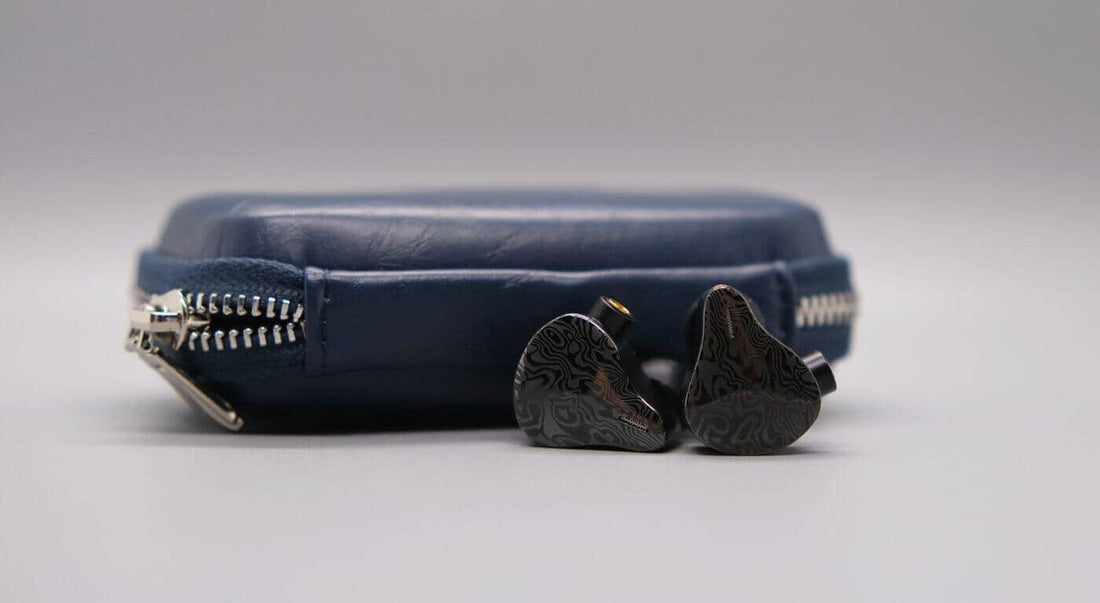
Introduction
DUNU’s Vulkan (2DD/4BA) is a project that I have been aware of for quite some time. I heard the original prototype way back at CanJam SoCal 2021, and at the time, I found it to be impressive for its tonal balance if not somewhat dry in terms of its timbre. Fast forward six months, and I heard two more prototypes which were on track, but still not quite there. Another few months brings us to the present where I have the latest version of the Vulkan, and ostensibly, the one that will be taken to full production at $380 MSRP. Let’s take a look at how it fares on the chopping block.
This unit was provided for review by DUNU. As always, what follows are my honest thoughts and opinions to the best of my ability.
DUNU Vulkan – Product Summary
- Reasons to buy
- non-clinical sound w/ reasonably good tonality
- wide, expansive soundstage
- high quality accessories
- Reasons not to buy
- clarity is middling
- some might find treble response uneven
Source and Drivability
All critical listening was done off an iBasso DX300 with lossless files. The stock cable and silicone ear tips were used. The Vulkan takes a moderate amount of power to drive, but I had no issue hitting my usual listening volumes (~70dB). If you'd like to learn more about my listening methodology, test tracks, and general beliefs in audio, then I would encourage you to check out this page.
The Tangibles
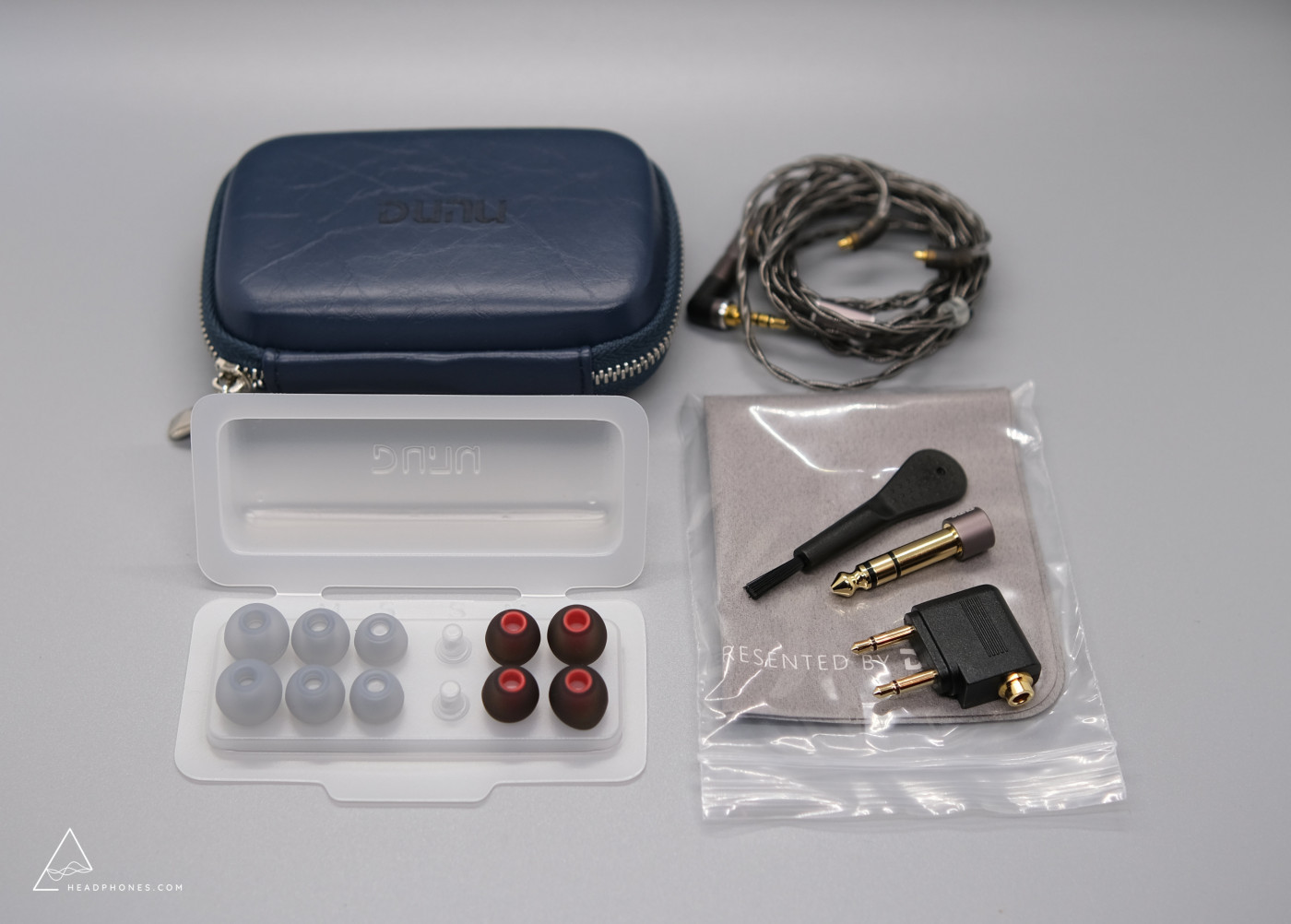
In the hand, the Vulkan’s packaging is quite substantial and reminiscent of what you might expect of a more expensive set. In fact, it is the same packaging that encases the brand's significantly more expensive Zen (Pro). Even if we're not talking specifically about sound quality here, it's nice to see that DUNU is trickling down the experience of receiving their higher-end products. The party doesn’t stop as you pull apart the magnetic latch and dig into the accessories:
- DUW02S MMCX cable w/ interchangeable plug
- 2.5mm/3.5mm/4.4mm cable terminations
- 3.5mm to 6.35mm adapter
- Silicone tips in three varieties
- Dark Blue Leather Carry Case
- Cleaning tool and microfiber cloth
As might be expected given DUNU’s track record, every included accessory is of excellent quality. The cable locking system that DUNU employs is one of the best, if not the best, in the business. It feels hardy and like every part of the cable - down to the knurling at the cable lock - has been precision machined. Only within the context of DUNU’s own discontinued DUW02 do I feel compelled to level a criticism; the DUW02’s sheath was more pliable and softer in the hands. The DUW02S seems more prone to kinking even if it’s no slouch in the usability department.
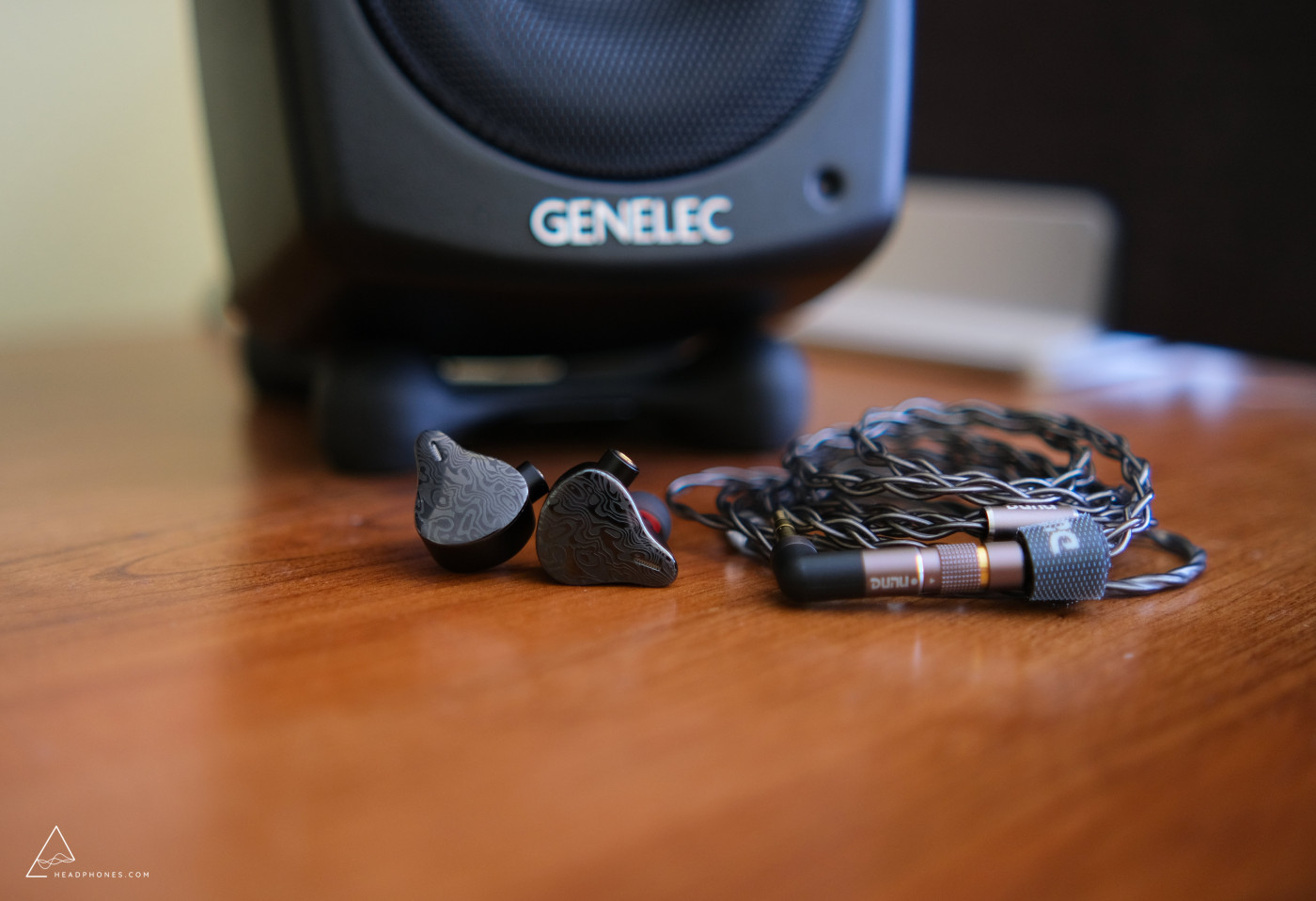
The Vulkan itself carries over the elegant, aluminum shell of DUNU’s tribrid IEM, the EST112. It is a more triangular shell that is fairly thick in width, yet quite stout at the nozzle. The faceplate has a Damascus-like aesthetic which I find to be more visually appealing than the engravings that were on the EST112. For fit, I found the Vulkan to be quite comfortable, although per usual, fit and comfort are subjective to the end user. Build quality is of course excellent with perfectly placed filters, zero machining marks, and robust MMCX connectors.
Sound Analysis
Frequency response measurements were conducted off an IEC-711 coupler. There is a resonance peak at 8kHz; as such, measurements after this point should not be considered entirely accurate. You can follow this link to compare the Vulkan to other IEMs that I have measured.
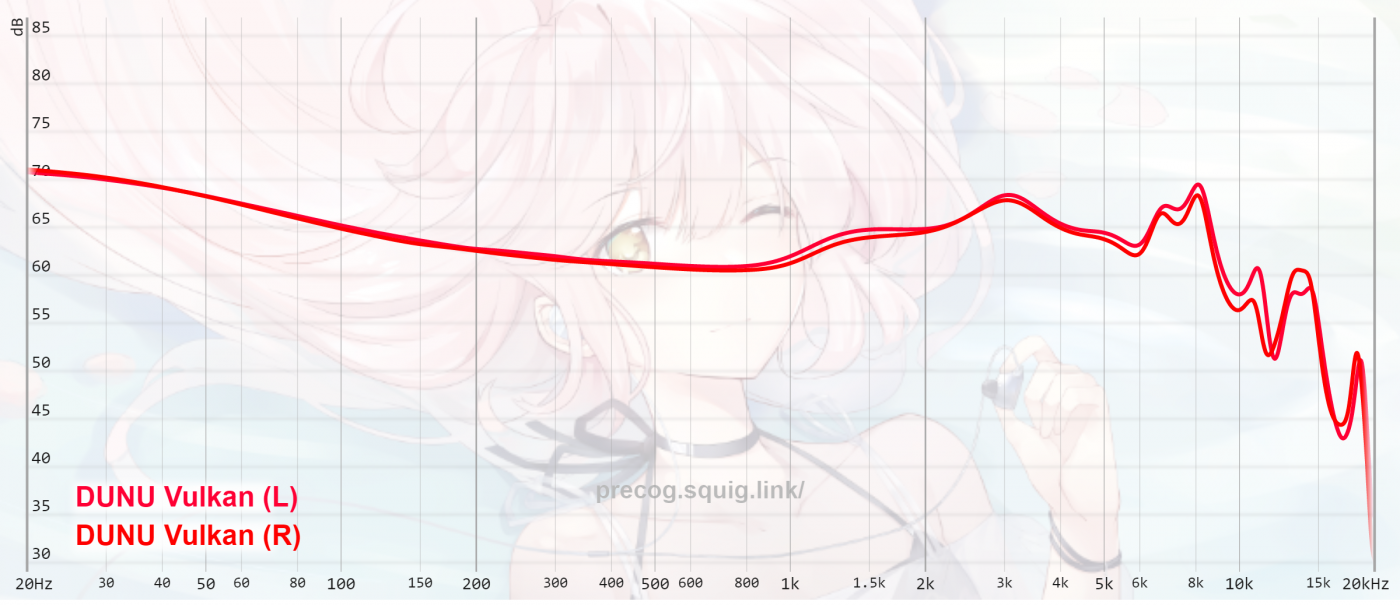
Generally, I hear the dynamic driver of the Vulkan as having a good sense of “thump” and of air behind it. The tactility of the bass is quite interesting and distinct from other DD implementations that I’ve heard. Note attack is definitely slightly fuzzy, and I feel that texturing is lacking at times even though I would not deem this a “dry” bass response by any means. In this respect, the Vulkan is mostly sub-bass focused with a touch of mid-bass to lend warmth. The bottom line? I don’t love this bass response, but I don’t hate it either.
The Vulkan has what is best described as a more relaxed midrange of the neutral flavor. It maintains a standard 3kHz pinna compensation; however, the magnitude of the slope and the subsequent slant into the presence regions are more reserved. Vocals have a faint sense of being pulled back, particularly in the upper-midrange, and being distributed more evenly along the center image as a result. Listener HRTF will dictate whether this is entirely desirable; however, in this reviewer’s opinion, it’s a welcome flavor of tuning choice. It lends to a thicker perceived note weight and ease-of-listening that, contrasted to the Vulkan’s treble response, culminates in a mostly desirably colored sound.
A lot has changed about the Vulkan’s treble response since I heard the original prototypes. The prototypes had too much valley after 10kHz and generally had me straining to discern the air frequencies. This is much less of an issue with the current Vulkan. It’s emphasized around 7kHz for a more sparkly treble response, and this perception is further aided by some extra presence from 10-15kHz. This works in most cases, although I do hear some sense of compression - chalkiness - to the way certain percussive instruments hit. But even though the Vulkan’s sheer extension is also not exemplary (it noticeably rolls off after 15kHz), it’s not an issue I would dock substantial points for. I also find that presence in the 10-15kHz region - which many IEMs lack - has benefits for timbre and perceived naturalness of decay as I’ll elucidate below.
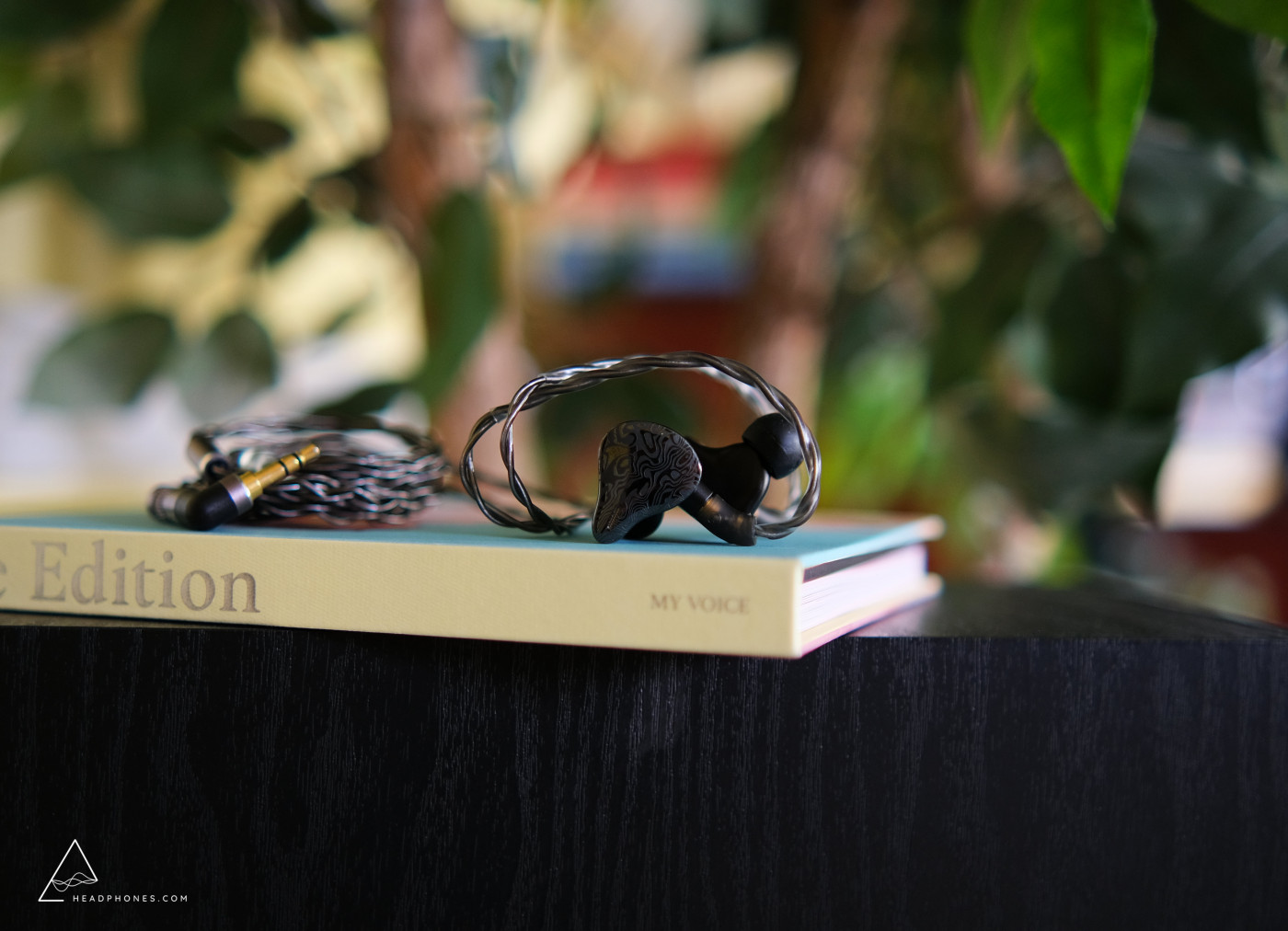
Technical Performance
Synonymous with some of DUNU’s other releases like the Falcon Pro, the Vulkan was never intended to compete with frontrunners in the resolution department. This is most evident with respect to the Vulkan’s clarity - the crispness of notes - which is basically just average (perhaps even slightly below average) for its price point. It might take some listeners, especially those coming from thinner, more analytical sounding IEMs, to adjust to this change of pace.
However, the Vulkan’s key strength lies in its presentation. It has a slightly diffused soundstage wherein instruments float a few inches out of your ear - something I already can’t say for the vast majority of IEMs I’ve heard - but more importantly, sounds are palpable. To put this in words, it’s almost as if I can feel them in the space rendered by the Vulkan. The Vulkan’s timbre is certainly a boon in creating this sense of physicality. Timbre leans more saturated, and there’s a welcome absence of the grittiness or parched quality that can characterize vocalists on more reference-oriented sets. As I touched on earlier, I believe this can be attributed to the Vulkan’s 1) warmer lower-midrange and 2) the absence of an egregious delta from 10-15kHz that most “gritty” sets tend to exhibit.
For a sense of dynamic contrast, the Vulkan comes across most muted in the upper-midrange frequencies on runs like Faith Hill’s “It Matters to Me” when she begins belting at 1:40. However, when it comes to dynamic swings that capture the bass and treble frequencies more closely, such as Sawano Hiroyuki’s “Tranquility” at 0:50, the Vulkan has a moderate sense of explosiveness. At the very least, the Vulkan has a decent sense of “impact” and of air being pushed, perhaps akin to the 64A IEMs, even if it is not the most conventionally dynamic IEM.
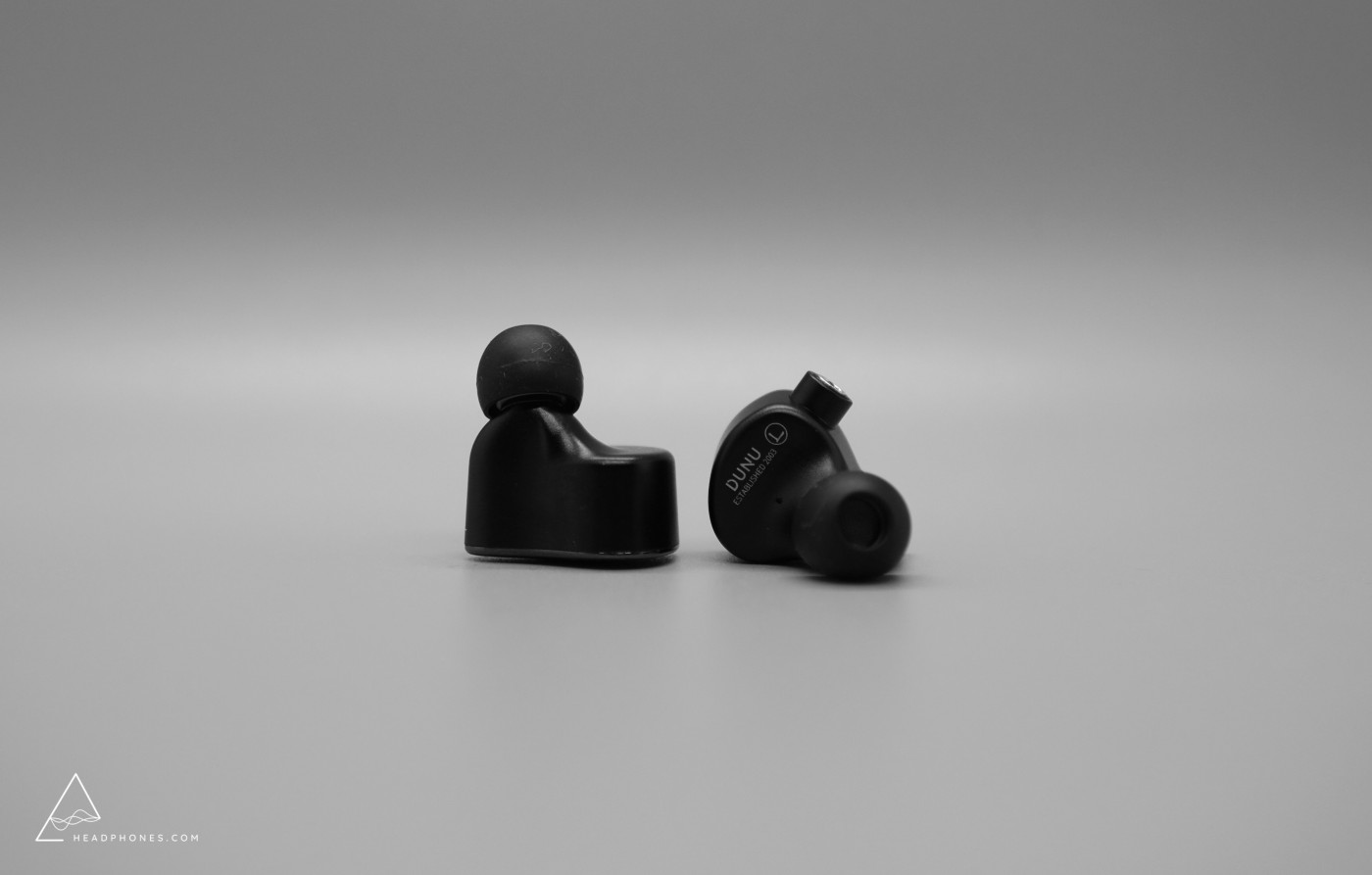
Value Proposition
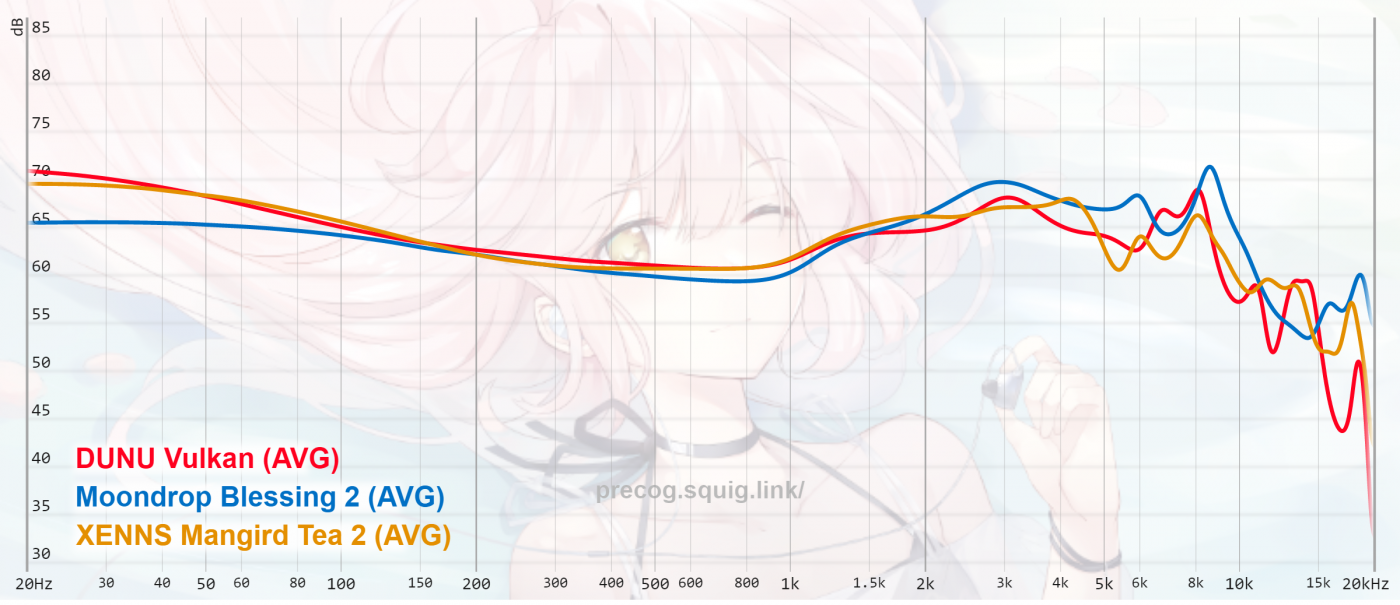
There’s one comparison that comes to mind, time and time again, when we’re weighing in on this price bracket: the Moondrop Blessing 2. In many respects, the Vulkan can be considered the natural alternative to the clinical sound the Blessing 2 is known for. Head-to-head, the Blessing 2 has a noticeable edge in terms of image precision and resolution; however, it’s equally eclipsed by the Vulkan in the departments that most reference monitors fall short in: namely naturalness of timbre and “fun” factor. I found that after acclimating to one set for some time, switching to the other was disconcerting and didn't sound so good before giving some time for my ears to adjust. In essence, I could see listeners swinging either way depending on what camp they fall in.
The Mangird Tea 2 is another interesting alternative. Like the Blessing 2, the Tea 2 generally has a cleaner, more segmented signature relative to the Vulkan. That said, I don't think its detail retrieval is that great; in fact, I'd put it at around the same pacing as the Vulkan in A/B. The Vulkan's presentation generally sounds slightly more diffused and like transients are denser; it tends to have a more downwards sloping characteristic to its dynamic range. Comparatively, the Tea 2 leans more upwards-compressed and "on full-tilt" if that makes sense. I think I would give the edge to the Vulkan; however, I can certainly see some listeners preferring the cleaner bass lines and more forward upper midrange of the Tea 2 for the clarity it imparts.
The Bottom Line
The Vulkan is an IEM that I would encourage listeners to give their ears some time to acclimate to. Its merits won’t necessarily be obvious on first listen for some listeners, especially those that are indexing for sheer clarity. But for people who are after its flavor of sound, I think the Vulkan is reasonably balanced enough to be considered one of the more solid options at its respective price point; this sentiment also taking into account its excellent set of accessories and build quality.
-Precogvision
---
Discuss the DUNU Vulkan on the HEADPHONE Community Forum here.
---
